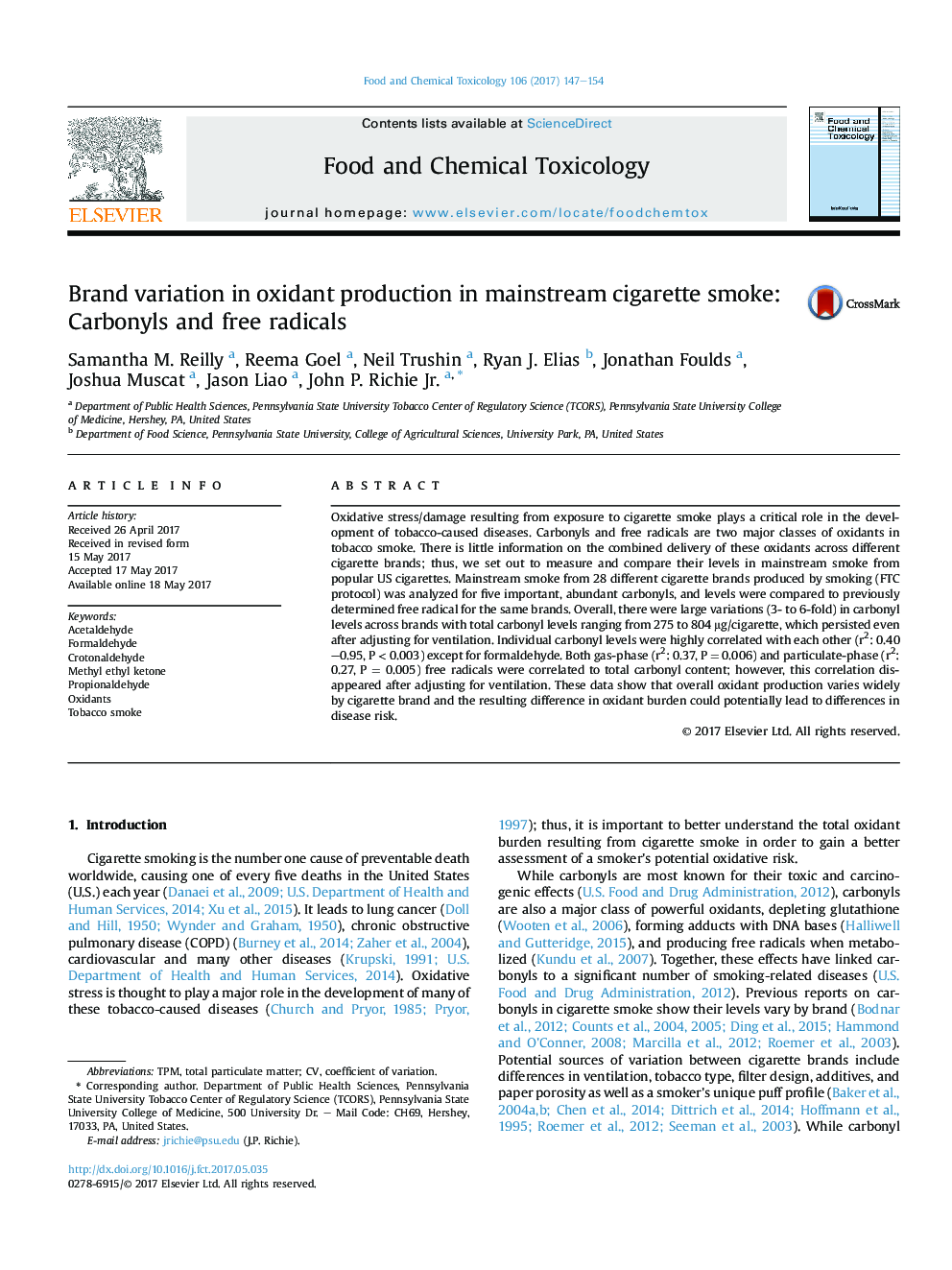| کد مقاله | کد نشریه | سال انتشار | مقاله انگلیسی | نسخه تمام متن |
|---|---|---|---|---|
| 5560116 | 1403309 | 2017 | 8 صفحه PDF | دانلود رایگان |
- Carbonyls and free radicals are two of the major classes of oxidants in tobacco smoke.
- Carbonyls varied widely (3-6-fold) across cigarette brands with ventilation accounting for only half of this variation.
- Carbonyls are correlated with gas- and particulate-phase free radicals.
- However, these correlations are eliminated when adjusting for ventilation.
Oxidative stress/damage resulting from exposure to cigarette smoke plays a critical role in the development of tobacco-caused diseases. Carbonyls and free radicals are two major classes of oxidants in tobacco smoke. There is little information on the combined delivery of these oxidants across different cigarette brands; thus, we set out to measure and compare their levels in mainstream smoke from popular US cigarettes. Mainstream smoke from 28 different cigarette brands produced by smoking (FTC protocol) was analyzed for five important, abundant carbonyls, and levels were compared to previously determined free radical for the same brands. Overall, there were large variations (3- to 6-fold) in carbonyl levels across brands with total carbonyl levels ranging from 275 to 804 μg/cigarette, which persisted even after adjusting for ventilation. Individual carbonyl levels were highly correlated with each other (r2: 0.40-0.95, P < 0.003) except for formaldehyde. Both gas-phase (r2: 0.37, P = 0.006) and particulate-phase (r2: 0.27, P = 0.005) free radicals were correlated to total carbonyl content; however, this correlation disappeared after adjusting for ventilation. These data show that overall oxidant production varies widely by cigarette brand and the resulting difference in oxidant burden could potentially lead to differences in disease risk.
207
Journal: Food and Chemical Toxicology - Volume 106, Part A, August 2017, Pages 147-154
